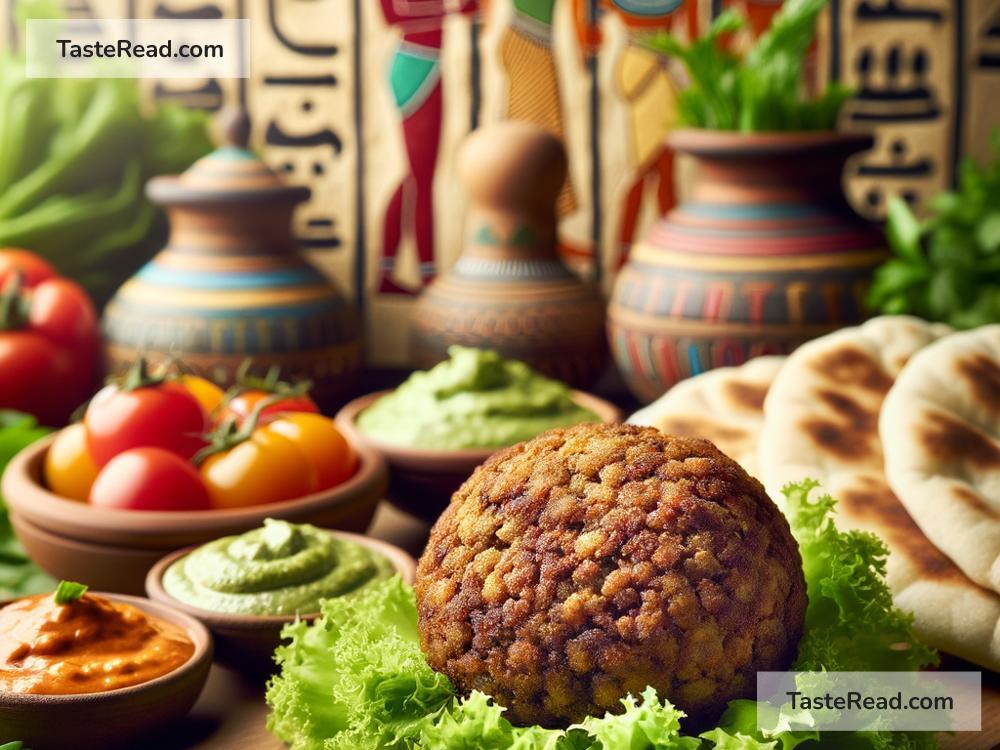From Ancient Egypt to Modern Times: The Journey of Falafel
Falafel has come a long way from the sunny lands of Ancient Egypt to become a beloved food item across the globe. It’s a simple but delicious dish that consists of deep-fried balls or patties made from ground chickpeas, fava beans, or both. It’s often served in a pita, which acts like a pocket, or wrapped in a flatbread, known as laffa. Embodied with herbs, spices, and accompanied by sauces such as tahini, this food item has a unique flavor and a crispy texture that many can’t resist. But how did falafel make its way from the ancient times to modern kitchen tables and street food stalls around the world? Let’s take a culinary journey through time.
Origins in Egypt
The story of falafel begins in Egypt. The common belief is that it was first made by Copts, an Egyptian Christian group, who ate it during Lent. Originally made from fava beans, which have been a staple in Middle Eastern diets for thousands of years, falafel was a nutritious substitute for meat during fasting times. Its name is believed to have derived from the Arabic word for spicy, ‘filfil’, indicating the profound blend of spices that give falafel its distinctive taste.
Spreading Across the Middle East
Falafel didn’t stay confined within the borders of Egypt. As trade routes expanded, falafel made its journey across the Middle East. Each region brought its twist to the recipe, with many countries substituting fava beans with chickpeas. This humble food became a common ground among cultures, satisfying the taste buds of many with its versatile nature.
In countries like Israel, falafel has been embraced as a national dish, often served in pita bread with salad, pickled vegetables, hot sauce, and a drizzle of tahini sauce. Meanwhile, in Palestinian cuisine, falafel continues to be a staple, enjoyed by people of all walks of life. The dish symbolizes not only historical significance but also cultural identity in many Middle Eastern societies.
A Global Delicacy
The migration of Middle Eastern people across the world took falafel along with them, popping up in Europe, North America, and beyond from the late 20th century onwards. The global appeal of falafel isn’t hard to understand. It’s vegetarian, packed with protein, and can be adapted to suit various dietary needs. With the rise of vegetarianism and veganism worldwide, falafel has found a new and eager audience.
In cities around the world, from New York to Sydney, you can now find falafel served in traditional and innovative ways. Food trucks, fast-food chains, and gourmet restaurants have all embraced falafel, experimenting with fillings and toppings, turning it from a humble street food into a trendy, global phenomenon.
The Health Benefits
Beyond its rich history and delicious taste, falafel is also celebrated for its health benefits. Made from chickpeas or fava beans, it’s rich in protein, fiber, and complex carbohydrates. These ingredients provide energy, help with digestion, and can keep you feeling full longer. Also, since it’s cooked in olive oil, it’s also a heart-healthy option when consumed in moderation.
The Future of Falafel
From ancient Egypt to modern times, falafel has evolved while maintaining its simplicity and essence. Today, as the world becomes more conscious about sustainability and vegetarian diets, falafel’s popularity only seems to grow. It represents not only a meal that has nourished generations but also a dish that transcends cultures, bringing people together over shared tables.
As we look to the future, falafel stands as a testament to the adaptability and enduring appeal of traditional foods. Whether enjoyed in a bustling street market in Cairo, a cozy restaurant in Paris, or a summer festival in the US, falafel continues to capture hearts and palates, a millennia-old dish that is forever modern.
The journey of falafel from ancient Egypt to our globalized palette reflects more than just the migration of a dish; it mirrors humanity’s journey, a tale of trade, migration, and cultural synthesis. In every bite of this crispy, flavorful fare, there’s a piece of history, a blend of cultures, and a story of survival. Falafel, in its simplicity and depth, recalls the past while feeding the present and inspiring future generations to come together, one delicious meal at a time.


